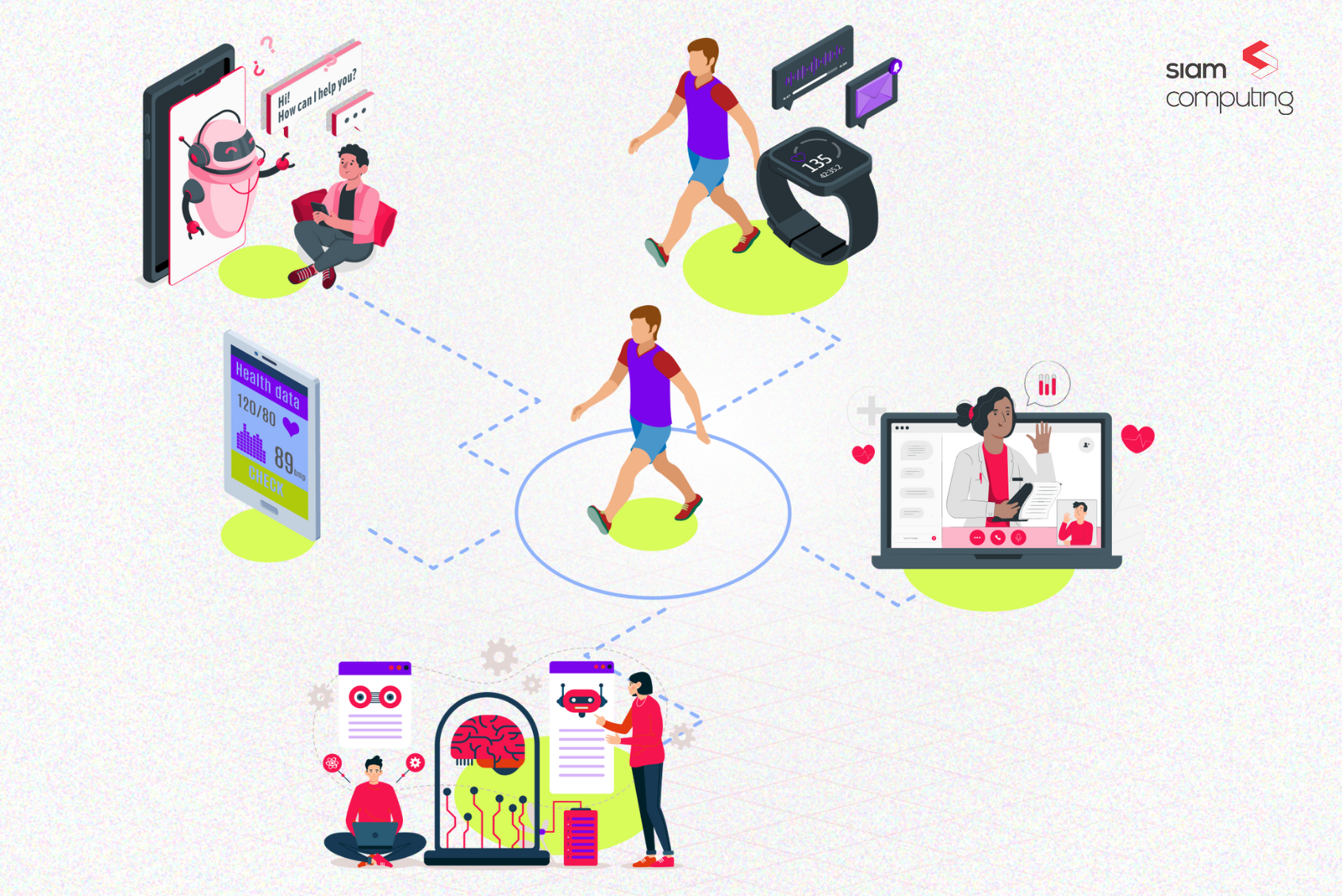One can’t deny the fact that the present scenario that we are living in can be rightly called as the ‘Startup Era’. There are many reasons to back up this statement. The primary reason being, the current era is a transitional era in almost all walks of life and therefore new business dynamics are on the ‘watch out list’.
Okay, now let’s come to this question, ‘How to get ideas for building a startup?’ Simple! Follow the following steps and you are on the way to becoming a successful business person:
- Take a piece of paper.
- List the top issues that are faced today.
- List all the solutions that come to your mind.
- Pick the best of those.
- Invest and develop. – Boom!
Does the above list of steps seem simple enough for you? Bingo! You have got the list of to-dos that will most likely not help you in the long run. Then, how do you ‘identify ideas for startup’ exactly? Keep reading as we take you through the crucial brainstorming steps to a successful startup business.
Identify a nudging Problem/Issue
There are so many problems and issues surrounding us for sure! But, you need to watch out for a real and nudging problem/issue. Something that needs focus and attention to crack it. This is the real catch to ‘identify ideas for startup’.
Frame questions and answers to analyze the importance of the problem statement that you are identifying. Try to figure genuine answers to questions like the ones listed below:
- What is the problem with ‘the problem’ exactly?
- Why does this problem need a solution in the first place?
- What are the ‘almost available’ solutions to this problem?
- How does my proposed solution solve this problem exactly?
- What percentile of my proposed solution solves the problem?
It is a fact that your proposed solution will not be 100% perfect for the identified problem. You need to know that a startup will be a ‘work in progress’ as there is room for improvisation always. So, you need to have this mindset when you ‘identify ideas for startup’.

Picture Courtesy: Unsplash
Carry out a thorough root cause analysis
It is essential that you have an eye for this important detail – the key pain point of the problem. The crucial reason behind this is to break down the problem and dig into the roots until you spot the core root cause of it. Only if you take time and effort to reach the root cause of a problem, you will have a clear perspective of how to target and derive a solution for it.
Take a look at this case study.
Mr. Arun was labeled a lousy cook. But, the truth is, he put in all his efforts to make it work, still, he ended up not being up to the mark. Being a computer engineering graduate, he tried to attack this problem by using the professional method that he used to solve big problems at the company he works at. He points out the 5 why framework as depicted below.
Case Study – 5 Whys of a Problem Statement
It might seem silly, but still, he wanted to analyze the problem at hand and wanted to get to the core root cause of it. Hence he pens down the 5 why framework.
Problem Statement: Messed up Dosa

Once Mr. Arun pinpoints all the whys that he started to go over them one step at a time. And then finally attacks his root cause of the problem. With that insight, he pays close attention to the core problem statement and starts working on the key pain of the problem that he identified.
This is a very simple issue, but the way Mr. Arun figured where the actual messing up happened is the key to root cause analysis. When you hit on a problem statement, this is how you work about finding the root cause to the problem statement because only when you get to the root cause of a problem statement, you will be able to come out with a legit solution that is unique.
Also, along with the legit solution, you will figure out the other issues related to it. This way you will be prepared to tackle those issues in advance. It is essential to have an eye for these details because of the fact that the secret to a successful venture lies in taking care of the small things.
For whom are you solving the problem?
This is the next crucial question to which you need to find critical answers. In terms of business, your end result will be either of the following two:
- Product
- Service
So, now, the ultimate questions come into the picture:
- Who will buy my product?
- Who will avail of my service?
It is a mandate to develop a ‘user persona document’ in the first place. You need to be crystal clear of your target audience, failing which, your whole startup idea will be dilated. So, pay more attention to your target audience characteristics.
If you happen to ‘identify ideas for startup’ that is more towards ‘product development’, then you need to keep in mind the following essential points:
- Am I focussing on a global audience or local audience here?
- What is the overall approximate cost of the product development process?
- How much will my target be willing to pay for my end product?
- Who are my potential competitors and which of their products are similar to mine?
- What features do those products lack?
- How innovatively am I bridging the gap and implementing those features in my product?
- What is the average lifetime of my product?
- What are the necessary accessories needed for my product’s functioning?
- Are all the spare parts inside my product easily available?
- How do I cater to my target audience’s requirements?
On the other hand, if you ‘identify ideas for startup’ that is more towards ‘deliverance of service’, then you need to think of even more crucial elements such as:
- What kind of age group people will avail my service?
- How much will they be willing to invest in my service?
- How many days is a good time to quote for the deliverance of my service?
- Would my target audience have already come across such services?
- If yes, how much were they satisfied with those services?
- What more can I offer than my potential competitor in order to create my own audience?
- What other features of services fall under the radar of my target audience?
- What if some other third parties are involved in the picture? How much do I need to foresee in terms of finance, time, and quality of service delivery from their end?
- Am I deviating from my services protocols to meet my customers’ satisfaction?
- How do I keep up with the changing trends’ demands?
You need to answer the above questions with the utmost honesty. You need to think of situations that could not be completely under your control. You need to have a safe plan for those situations. Only upon taking care of the worst-case scenarios, will you know how much preparedness is required from your end.

Picture Courtesy: Unsplash
Prototype Building and Validating
Now that you have identified a nudging problem, carried out root cause analysis, and have spotted your target audience, it’s time to get your hands dirty by starting to build your prototype. You’d have come across this abbreviation – MVP – Minimum Viable Product. It is a development technique to build the prototype, be it a product or a service model.
So, when you build a prototype, you need to be open-minded. Because, when something theoretical takes a physical form, it may not exactly replicate your theoretical model. You might encounter challenges that you might not have even thought of in the first place. Here is a list of steps to build a prototype/MVP:
- Perform thorough Market Research Analysis
- Express your ideas no matter how raw it may seem
- Design the development process and user flow algorithms
- List out all the features of the project
- Build your hardcore Prototype/MVP
Once you build your prototype, the next important step is validation. Here is where you need to be your own critic and validate your first draft of the product/service model against your solution. You need to check if the output is solving the problem statement that you mentioned in the beginning. Only when your prototype takes form in reality, will you be able to judge the intensity of the key pain point and validate if your prototype is the actual answer.
Once you validate from the ‘problem-solution fit’ point of view, you need to validate your prototype/MVP for ‘product-market fit’. Here you need to analyze if there is enough demand from people for your prototypic solution. Once you are done with that analysis, the next crucial validation is for the ‘business model fit’. This is where you need to check if people are ready to make an investment in your prototype/MVP.
Rinse and Repeat
You are now on the verge of completing the prototyping cycle. On the basis of the first look of your product/service model, you will be in a position to prepare a learning graph. You need to cross-check if the first look serves as a solution to your key pain point of the problem statement defined in the beginning.
Once all this analysis is over you can move on to identifying the next key pain point to find a solution for or a new solution/business model. Then create the consecutive rounds of validations. With every round of proofing, it is important that your assumptions are clearly written down and you conduct subsequent experiments to clearly validate these assumptions. This is how you build a prototype and validate it.

Picture Courtesy: Unsplash
Finally…
The above-discussed steps and process is a guide as to ‘how to get ideas for building a startup’. Once you ‘identify ideas for startup’, you need to be clear of your end result at all the phases of building the startup. You need to keep fine-tuning the steps and process until you nail it in the end.
| Business is all about the right strategies. That’s where our product development expertise helps you. Siam Computing delivers impactful product solutions to hundreds of startups and enterprises across the globe. Subscribe to our newsletter and stay updated. |








